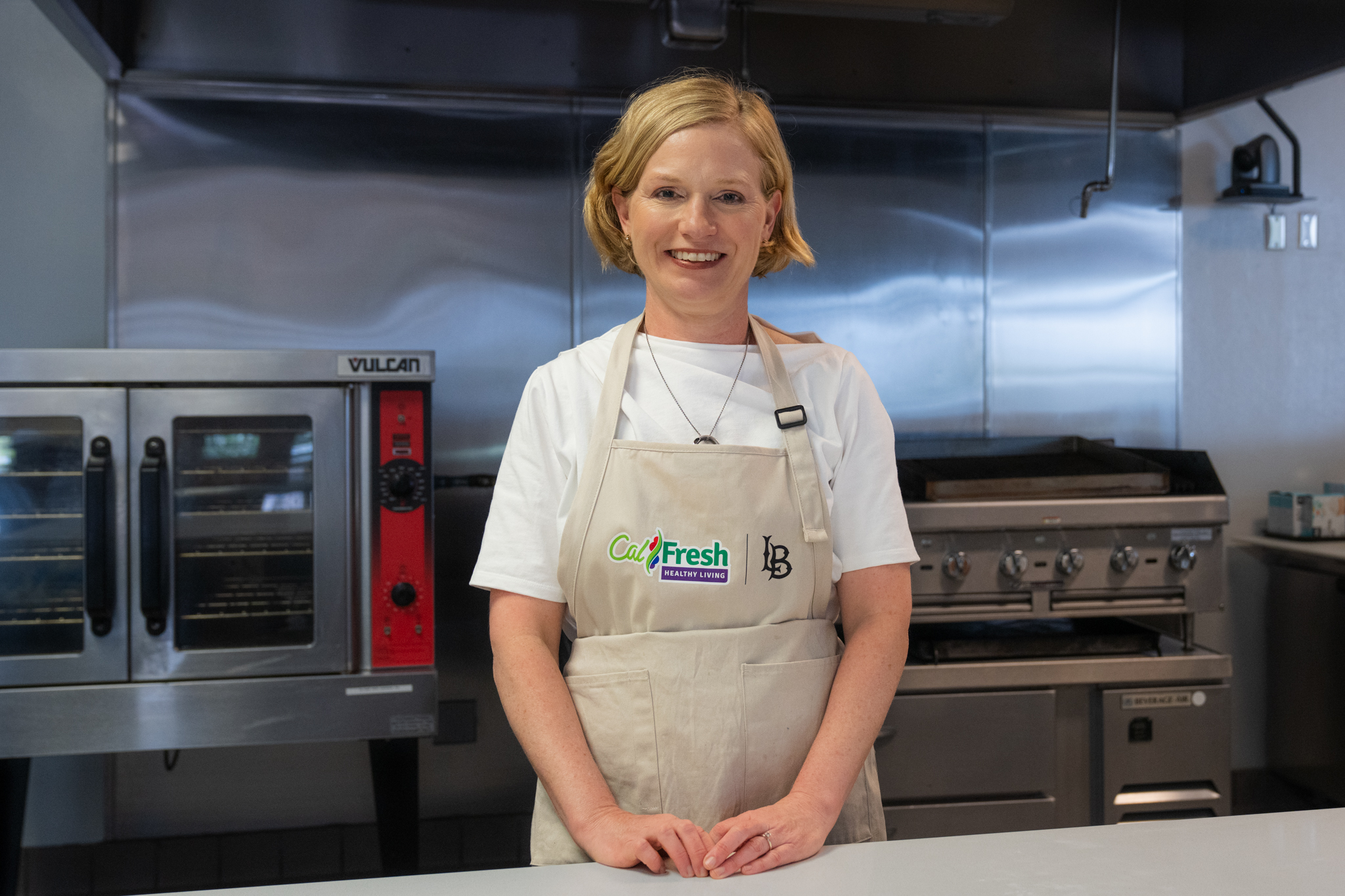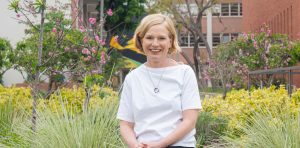
Kitchen Confidence
COLLEGE OF HEALTH AND HUMAN SERVICES
Integrated efforts across campus help students facing food insecurity and give students hands-on research experience.
According to Dr. Virginia Gray, Professor and Chair of the Department of Family and Consumer Sciences, people often have an idea of what it means to eat healthy, but they also often see themselves already written out of that idea because of their cultural backgrounds or current resources. Dr. Gray works to help students experiencing food insecurity at California State University, Long Beach write themselves back into a healthy eating narrative by bringing the CalFresh Healthy Living (CFHL) program to campus.
Supplemental Nutrition Assistance Program-Education (SNAP-Ed) is a nutrition education program that the United States Department of Agriculture (USDA) has funded for more than 3o years. In California, CFHL implements the state’s SNAP-Ed program. While CFHL has been addressing nutrition education for people experiencing food insecurity in California for many years, it did not specifically address these issues with college students until 2018, when Chico State received a grant to bring the program to nine participating campuses. “This was the first really large exploration of providing nutrition education to college students with food insecurity,” says Dr. Gray. The program aligns with the research that reveals the recently recognized prevalence of food insecurity among college students. “A Systematic Review of Food Insecurity Among US Students in Higher Education,” a 2018 paper by Aydin Nazmi and eight co-authors published in the Journal of Hunger & Environmental Nutrition, estimates that 43.5% of college and university students experience food insecurity, significantly higher than the estimated 13% of households in the United States. And the American College Health Association’s 2023 National College Health Assessment for CSULB states that 55% of respondents to its survey report low or very low food security.
Dr. Gray weaves student training experience into her own research, and the ingenuity of CSULB faculty who bring in student training grants has supported her research as well.
CSULB was one of the original nine campuses to receive CFHL funding, and the program now supports 13 total universities in the California State University system. CSULB received $314,000 for the first four years of the grant and expects to receive another $225,000 for 2025 through 2027. The program provides cooking classes and nutrition education for CSULB students, while working closely with the CalFresh team to help students experiencing food insecurity apply for food benefits. About 600 students benefited directly from CFHL in the last year; Dr. Gray stresses that the program also creates opportunities for about three student employees and 30 volunteers annually who help to provide the program. “What’s been really exciting for me is being able to deliver this program to college students while training the students who work on the grant. We hire student employees each year to deliver the program to their peers, and we also use this as a service-learning project so more and more students are getting exposed to SNAP-Ed work as a future career path,” she says.
One such student had been relying on his ability to stretch fast food orders over several meals until he started working for the grant. Now that he has learned how to cook, he can make healthy meals for himself and for the parent he lives with. He has gained the confidence and motivation to cook at home, and now both he and his family have more energy and enjoy food more.
Dr. Gray is pleased to tell stories like this one, but she also points out that it is hard to create change for individuals when their environment or the policies that affect them do not change. This is why each campus must come up with its own strategies to make changes at the policy, systems, and environmental levels as part of the grant requirements.
CSULB’s plan includes integration with other important campus resources to create systemic change. The CFHL program is delivered within the structure of the Basic Needs center, which provides CalFresh application support as well as food, housing, and financial resources for students, and funds the pantry coordinator position. Danielle Muñoz-Channel, the Director of Basic Needs, is a co-director on the grant along with Dr. Gray. The Laurén Chalmers ‘83 Beach Pantry and the Beach Kitchen, the pantry’s teaching kitchen, are also important partners. “The Beach Kitchen, which opened in 2022, has been a game-changer for delivering our CFHL program, allowing us to teach nutrition in the context of hands-on cooking classes,” says Dr. Gray. The Beach Kitchen exists because the pantry manager, Christina Limón, noticed students getting ingredients that they didn’t know how to use and applied for funding to build a teaching kitchen. It’s this kind of creative thinking and collaboration that Dr. Gray finds so rewarding about her work. “Working with a group of people who are engaged in this together, super creative, and always listening to our audience to find the next thing to try is really fun,” she says, adding that this is true at both the university level and the national level.
Dr. Gray also enjoys seeing her research data create change. Early in the program’s implementation, she conducted focus groups to study the experiences of the program implementers and discovered a need for a new curriculum. The USDA-approved curriculum was written for people with limited education as well as limited resources, but college students don’t suffer from the former. “One of my most exciting moments as a researcher was being able to use those data to advocate for developing a curriculum specific to college students and then seeing those new lessons come to fruition,” she says.
Future plans for the program encompass continued data collection to assess impacts and use of these data to better meet audience needs. So far, program evaluation data across all implementing campuses suggest students report higher confidence shopping on a budget and eating more fruits and vegetables. The program is constantly expanding and addressing new audiences. Dr. Gray says that one emphasis is to meet the needs of student parents, which will change the lives of not only those students but also the next generation.